Easy Harissa Paste (Made With Dried Chiles)
This easy harissa paste recipe creates the most fragrantly fiery paste by rehydrating dried chilli peppers. And it’s super easy to adjust the spiciness by changing the type of chiles. You’ll never need store-bought harissa again!
This easy harissa paste recipe uses rehydrated dried peppers for the ultimate pantry-based harissa paste.
Harissa paste is a versatile and flavourful condiment that adds a fragrant spicy kick to any meal. The flavour of warm toasted spices, smoky yet fruity peppers, and a hint of garlic will transform your weeknight cooking.
I always have a jar in the fridge, ready to add that complex aromatic, spicy flavour to salad dressings, soups, stews and sauces. If you’ve never made homemade harissa paste, you’re in for a serious treat!
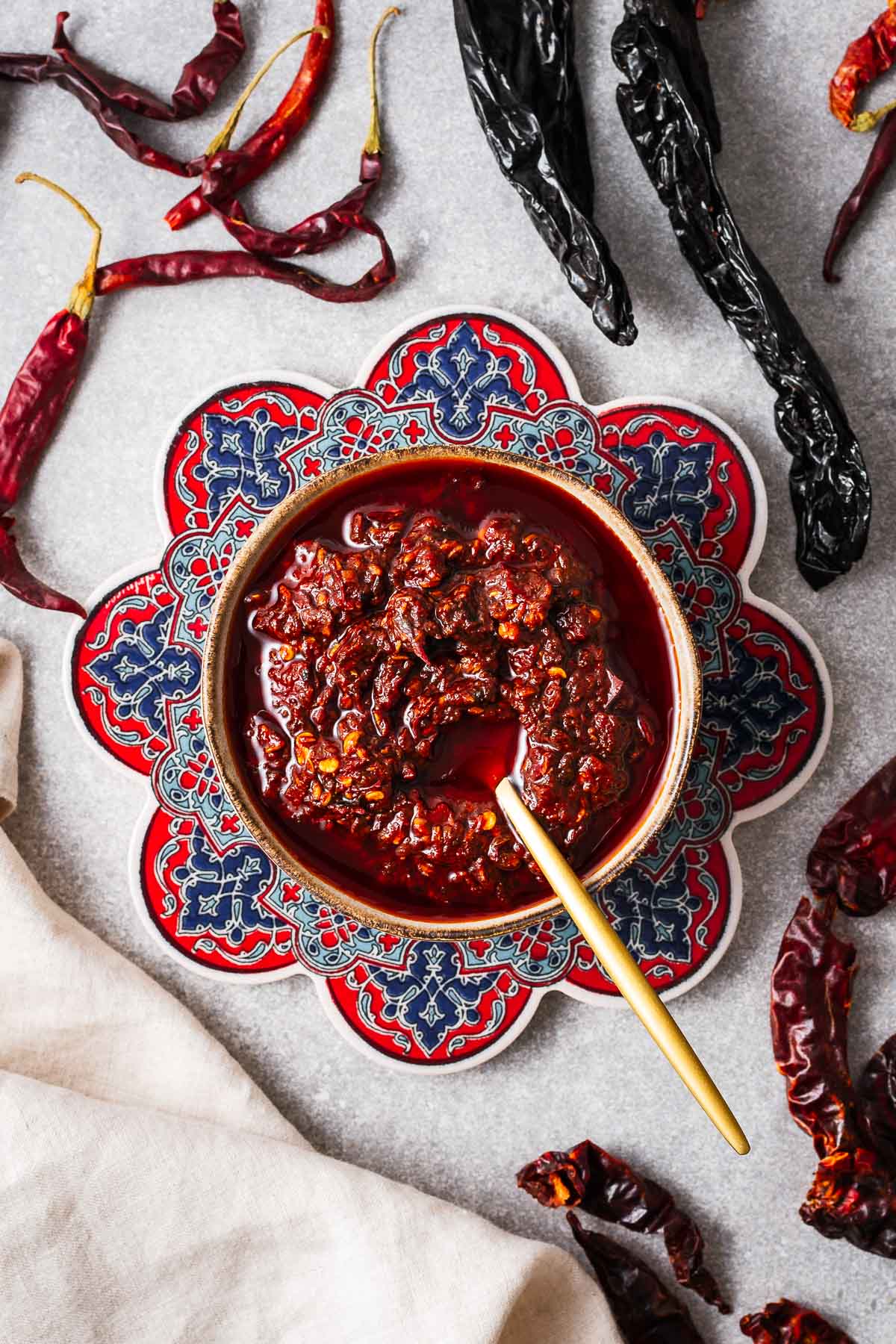
What is harissa?
Harissa paste is a spicy condiment used in North African and Middle Eastern cuisine. It’s made from a blend of roasted red peppers (including red chillies), olive oil, garlic, vinegar or lemon juice, and spices such as cumin, coriander, and caraway.
There are three ways to make harissa paste:
- From roasted peppers – like this rose harissa paste recipe.
- You can make a quick harissa paste from harissa powder.
- And, finally, you can make harissa paste using dried whole chilli peppers like we’re doing in this recipe. You simply rehydrate the peppers in boiling water, then blitz it into a flavourful paste that’s ready to use immediately!
Keep reading for step-by-step instructions to make easy harissa paste from dried chile peppers. Or learn more about harissa paste and how to use it!
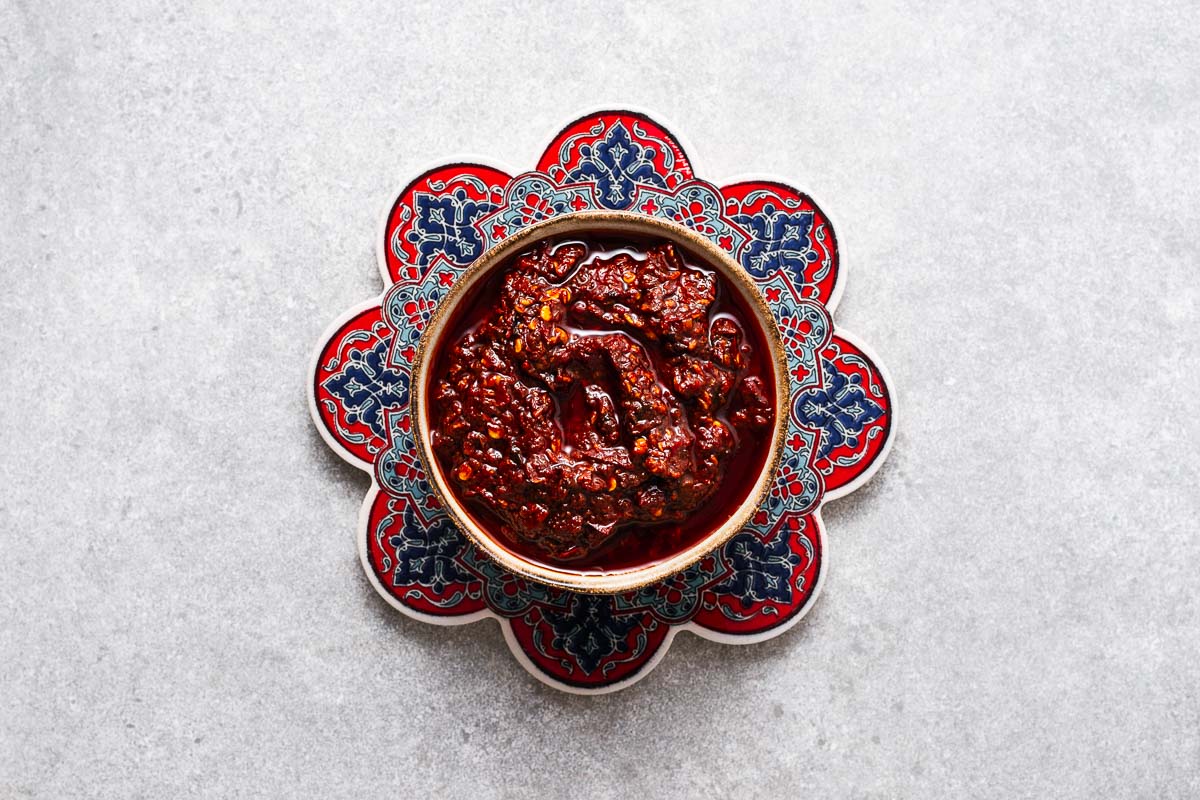
Why you’ll love this harissa recipe
If you love the North African flavour profile of harissa paste, you’ll adore this harissa paste recipe I adapted from Yotam Ottolenghi‘s harissa paste recipe:
- Fragrant and flavourful: Fragrant toasted spices and smoky charred dried chiles deliver the ultimate flavour convenience.
- Easy to make: There is no need to make roasted red peppers first, simply rehydrate the peppers and you are good to go!
- Versatile: Harissa paste adds instant Middle Eastern flavour to your favourite dishes. Use it with roasted veggies, create flavourful dips and sauces, use it to marinade harissa chicken, or stir it into soups and stews.
- Long shelf life: Store the homemade harissa paste in a sterilised jar for up to four weeks! Simply cover the surface with a thin layer of olive oil for longer storage.
Ingredients and substitutes
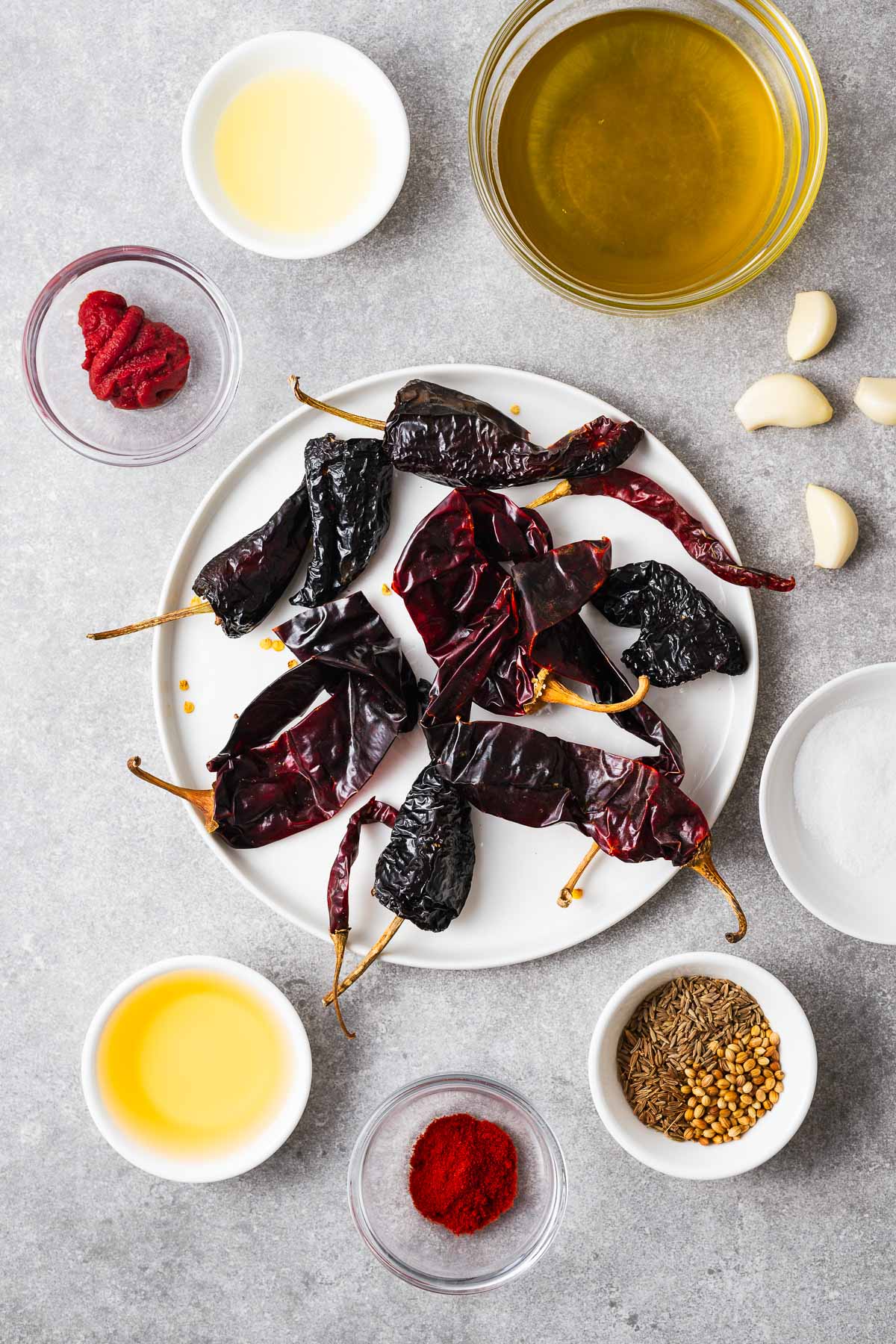
This easy harissa recipe relies on a few pantry staples. You can customise the chile peppers to suit your spice tolerance.
- Dried chiles: This recipe calls for a combination of mild ancho chiles, moderately spicy guajillo chiles, and hot chile de arbol. Combined, they create a fruity, smoky, flavourful harissa paste with a moderately spicy kick. New Mexico chiles are also great for a milder harissa. But you don’t need a spice cabinet overflowing with dried chillies to make harissa, use your favourite red chiles and you’ll love your homemade harissa!
- Garlic: Fresh garlic cloves – briefly toasted in a hot pan – add a savoury depth of flavour.
- Spices: A blend of cumin seeds, coriander seeds, and caraway seeds gives this harissa paste its earthy and aromatic flavour. If you don’t have whole spices, you can substitute them with ground cumin, ground coriander, and ground caraway.
- Tomato paste: Tomato paste adds a rich and slightly sweet flavour to the harissa paste. It also gives the paste a red colour and smoother texture. You can add a few sun-dried tomatoes for an even deeper flavour.
- Kashmiri chilli powder: This mild Indian chilli powder adds a vibrant red colour and a touch of heat to the harissa paste. If you don’t have it, you can substitute it with ground cayenne pepper (add a pinch at a time) or smoked paprika.
- Lemon juice and cider vinegar: These acidic ingredients add brightness and balance to the harissa paste. But it also helps to preserve the harissa paste, so don’t skip it. You can also use white or red wine vinegar.
- Olive oil: A good quality extra virgin olive oil helps to create a smooth and creamy texture in the harissa paste.
- Salt: I used kosher salt. But you can also use sea salt or table salt to taste.
Variations
- Smoked harissa paste: Add smoked paprika to boost the smokiness of your harissa paste. Or swap the chilli powder for chipotle powder for a spicy, smoky twist.
- Rose harissa paste: Add a teaspoon of rose water (or ground rose petals) when you add the tomato paste. This delivers a beautiful floral flavour. See this rose harissa paste recipe if you want to make rose harissa from scratch with roasted red bell peppers and garlic cloves.
- Mild harissa paste: Use only dried ancho chiles or New Mexico chiles for the base of your paste. Then replace the chile powder with paprika for a mild harissa paste that does not compromise on flavour!
How to make harissa paste
Making harissa paste at home is easier than you think!
This flavourful spice blend is perfect for adding a fiery kick to any dish. With just a few simple ingredients, you can make your own homemade harissa paste that is sure to impress.
See the harissa paste recipe card for ingredient measurements.
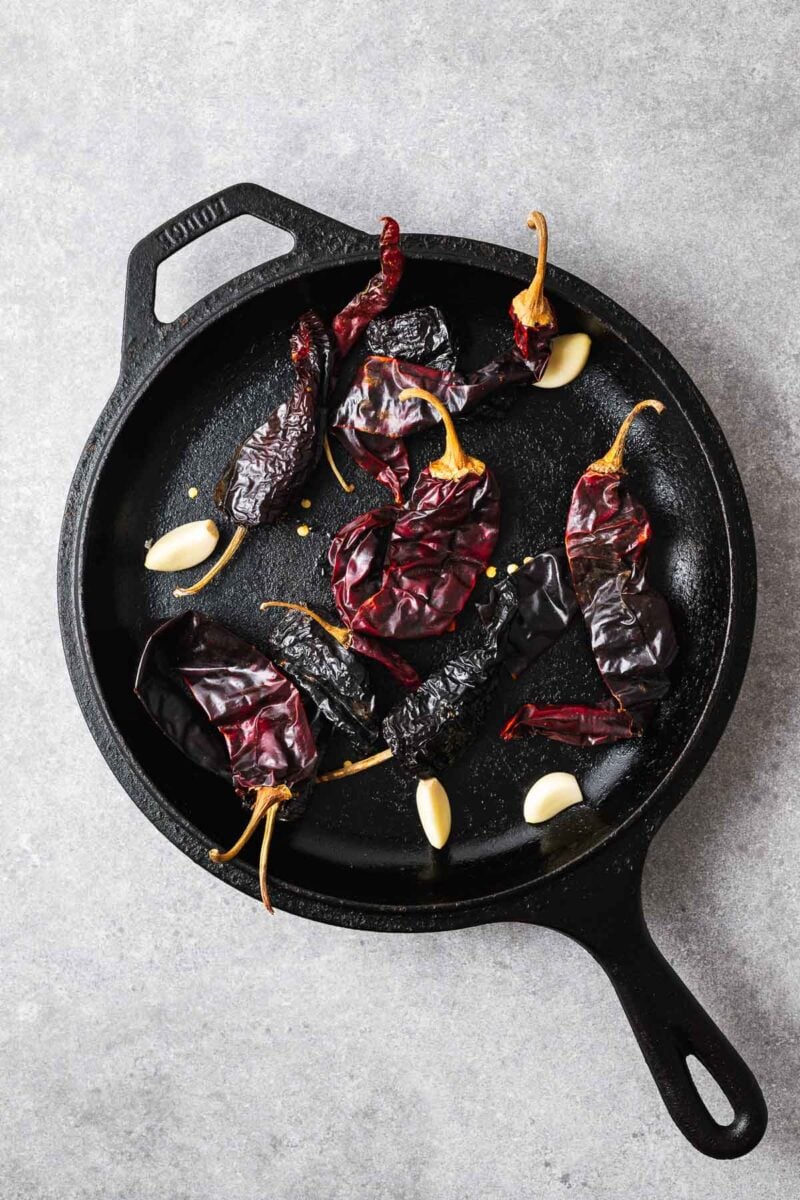
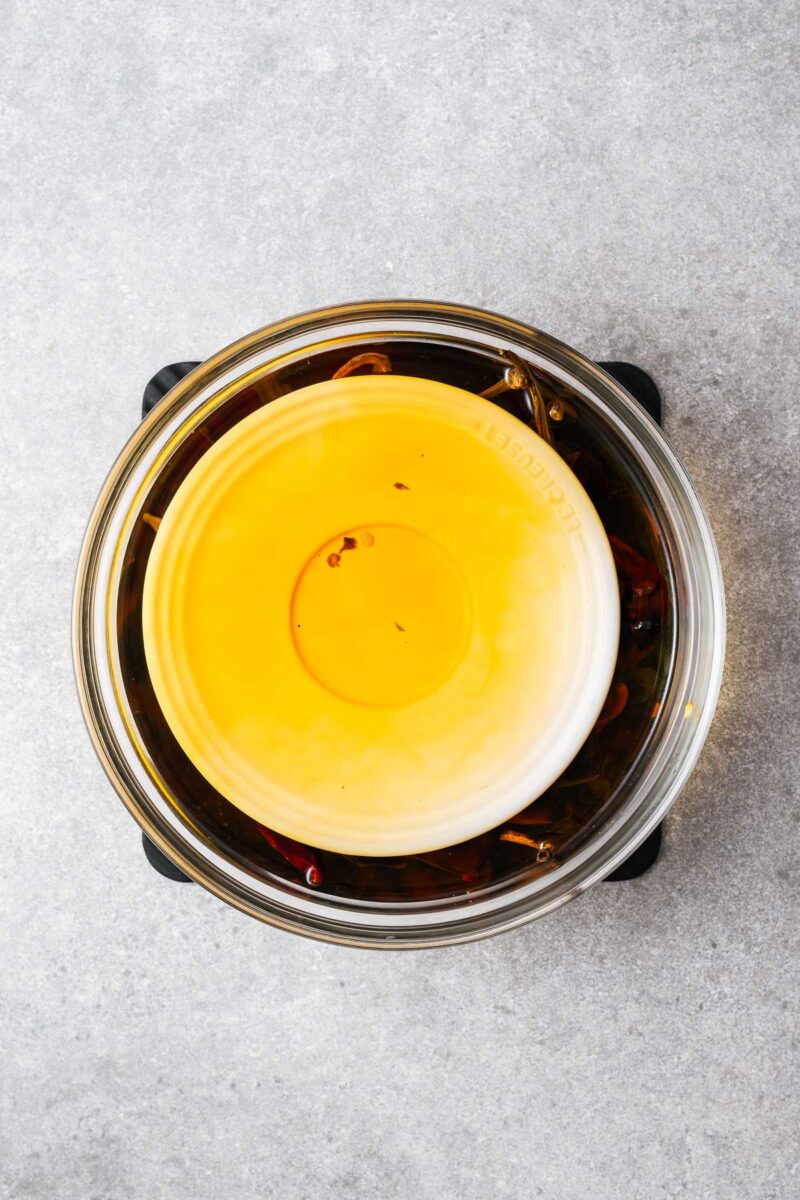
Step 1: Begin by toasting the dried chiles and garlic cloves in a hot frying pan for 2-3 minutes until fragrant and charred. Set aside the garlic.
Step 2: Transfer the chiles to a bowl of boiling water. Use a small plate to submerge the chiles, and soak for 30 minutes.
Destem the rehydrated chiles – wear gloves! Then drain and roughly chop them along with the garlic.
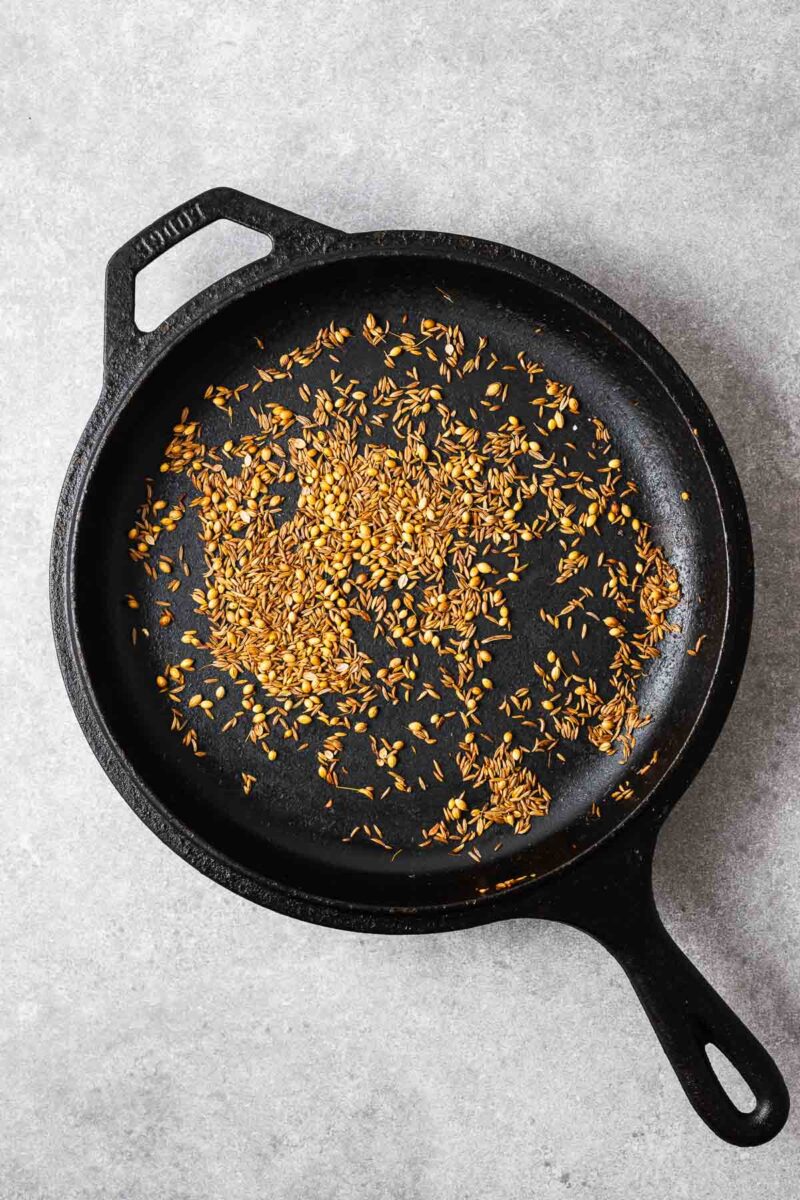

Step 3: In the same frying pan, toast the cumin, coriander, and caraway seeds until fragrant. Add them to a food processor and pulse for a minute to break them down.
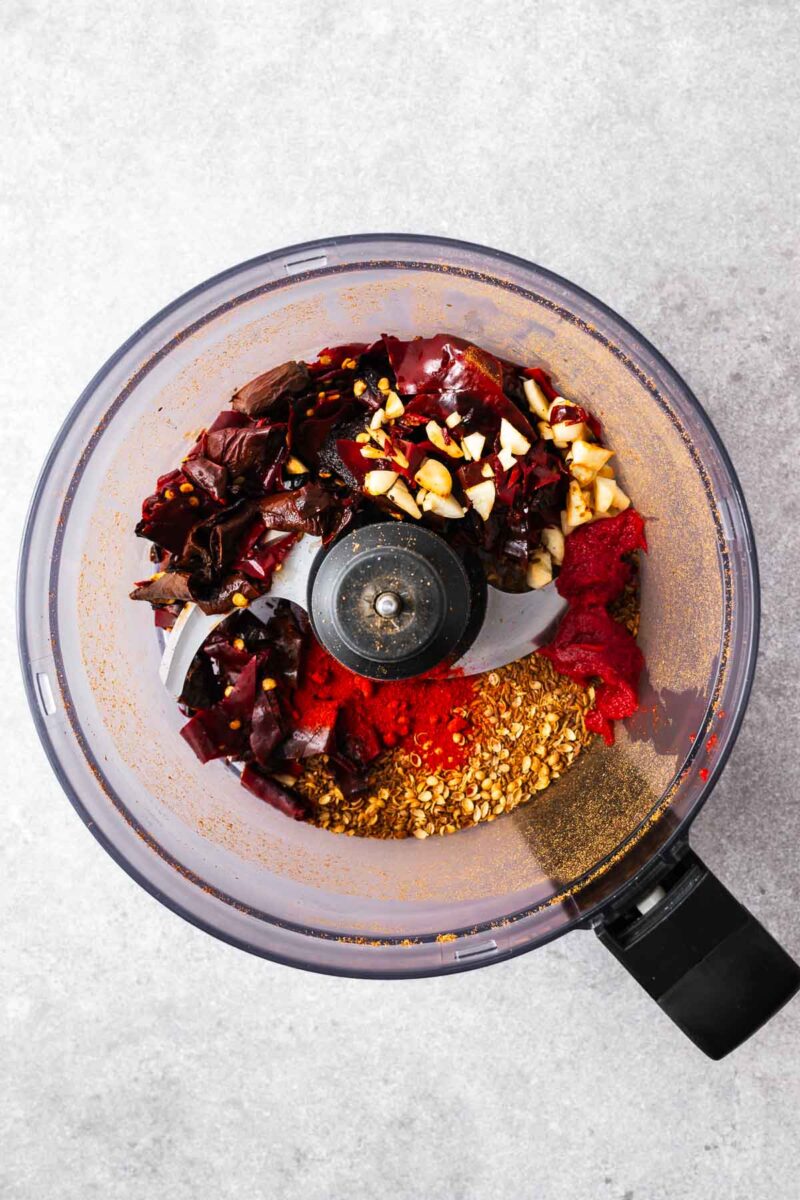

Step 4: Add the rehydrated chiles, garlic, tomato paste, and chilli powder to the food processor and pulse until well combined.
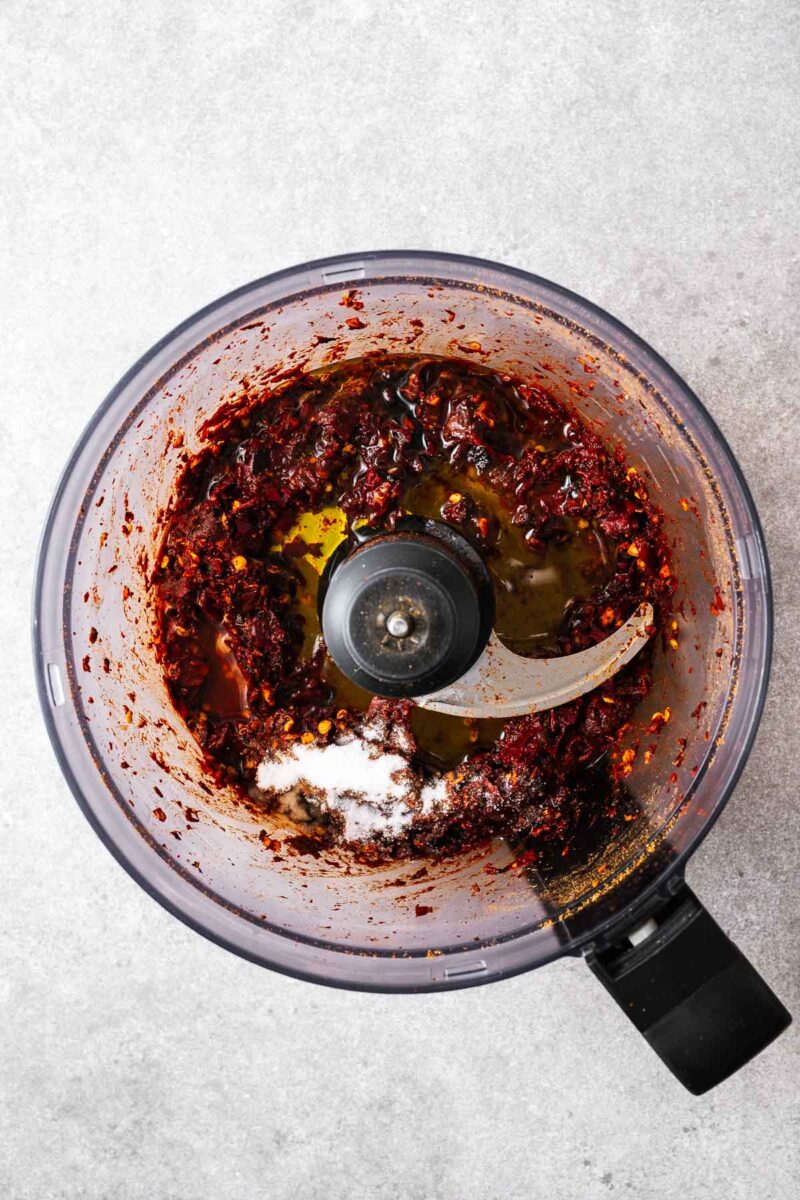
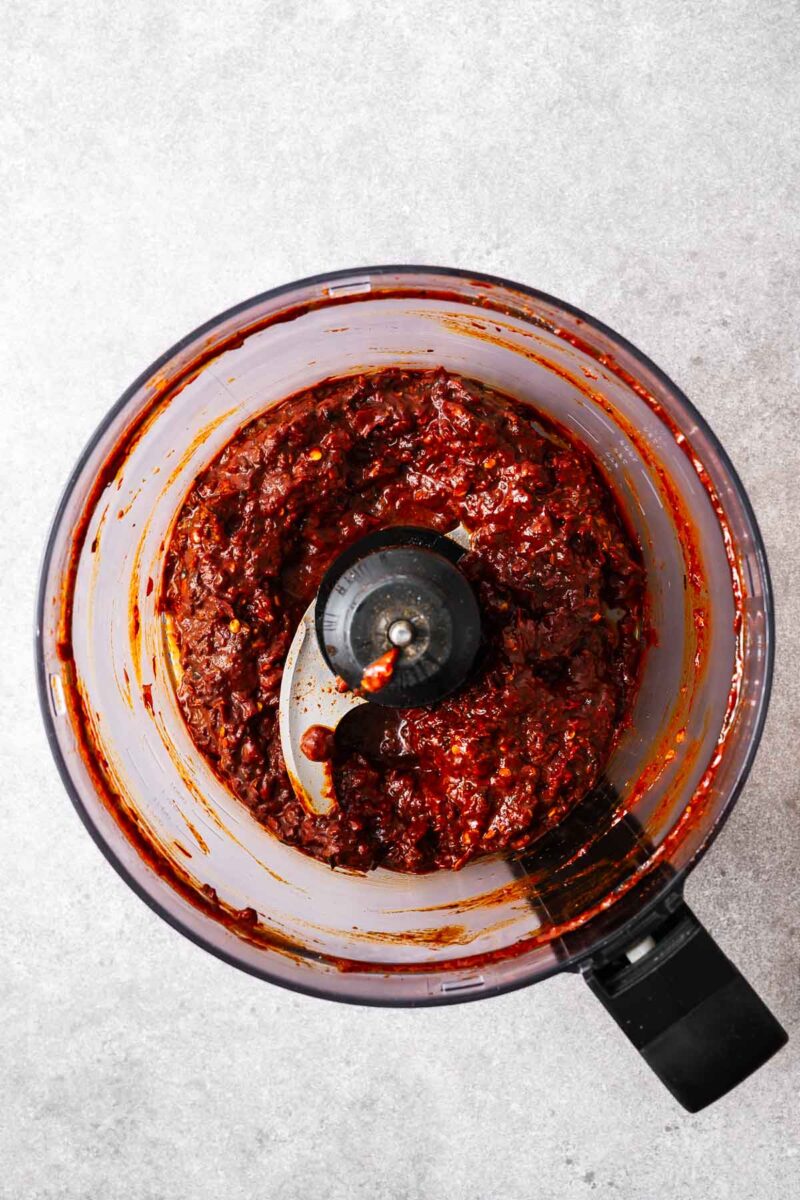
Step 5: Pour in the wet ingredients – the lemon juice, cider vinegar, half of the olive oil, and salt. Blitz until you have a coarse, thick paste.

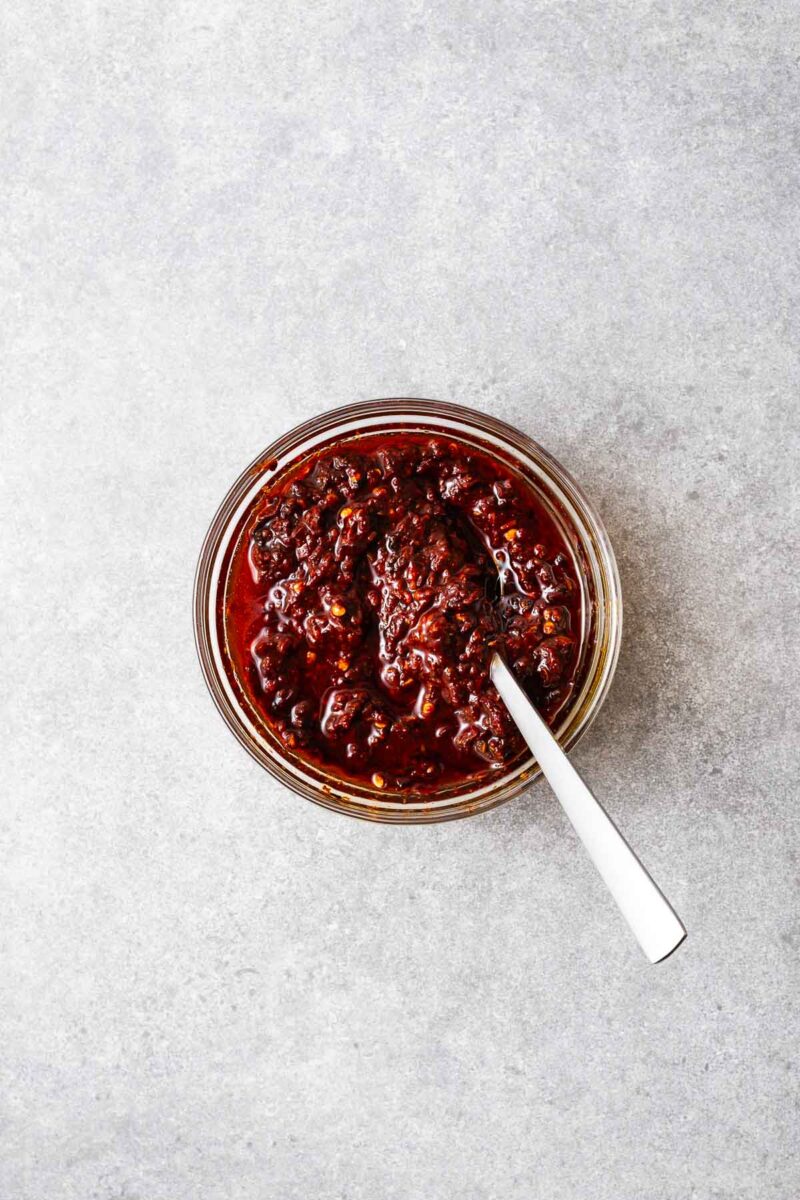
Step 6: Transfer the harissa paste to a bowl and stir in the remaining olive oil.
Your homemade harissa paste is now ready to use! Store it in an airtight container in the fridge for up to a week. Or, for longer storage, cover the surface with a thin layer of olive oil and use it within four weeks.
This harissa paste recipe is gluten-free and plant-based.
How to use harissa paste
Harissa paste adds a deliciously fragrant and fiery twist to any meal.
Here are some delicious ways to use harissa paste:
- Make harissa cooking sauce: Add a heaped tablespoon of harissa paste to a tomato sauce, or red pepper sauce. And use it to poach eggs (harissa shakshuka) or cook white beans in the spicy red sauce.
- Drizzle it over roasted vegetables: Drizzle harissa paste over roasted vegetables like sweet potato, cauliflower, broccoli or squash for a flavourful and spicy side. Or try this buttery harissa roasted cauliflower or harissa roasted carrots.
- Use it in a dressing or marinade: To make a marinade for grilled chicken or fish, mix harissa paste with olive oil, garlic, lemon juice and a pinch of salt. Or make this easy harissa vinaigrette to add to salads.
- Add it to stews and soups: Add a spoonful of harissa paste to stews and soups for a spicy kick. I love this harissa red lentil soup for a bowl of aromatic comfort food.
- Spice up your dips: Swirl a spoonful of harissa paste into sour cream or hummus for a delicious and spicy dip. See this harissa hummus recipe for step-by-step instructions.
- Use it as a flavourful hot sauce: Serve a bowl of harissa alongside any meal to bring some heat to the table with a powerful flavour boost.
See more recipes with harissa and how to use it.
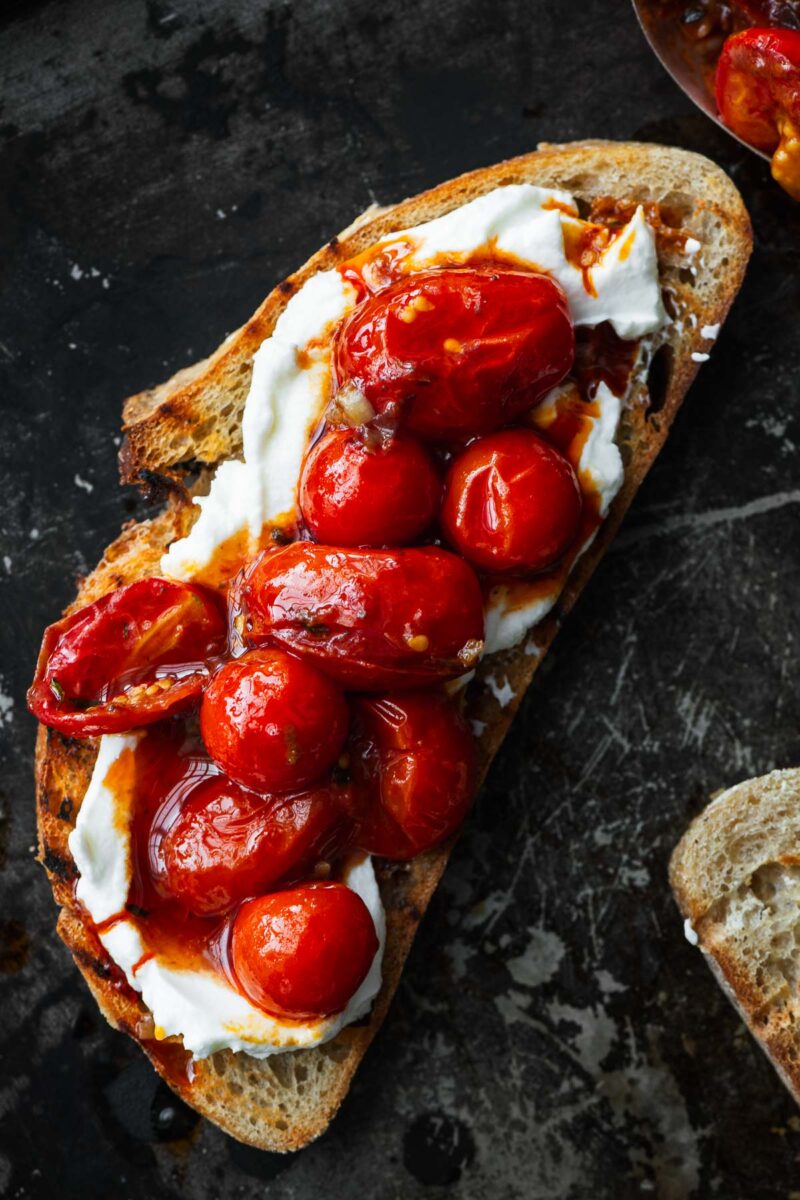
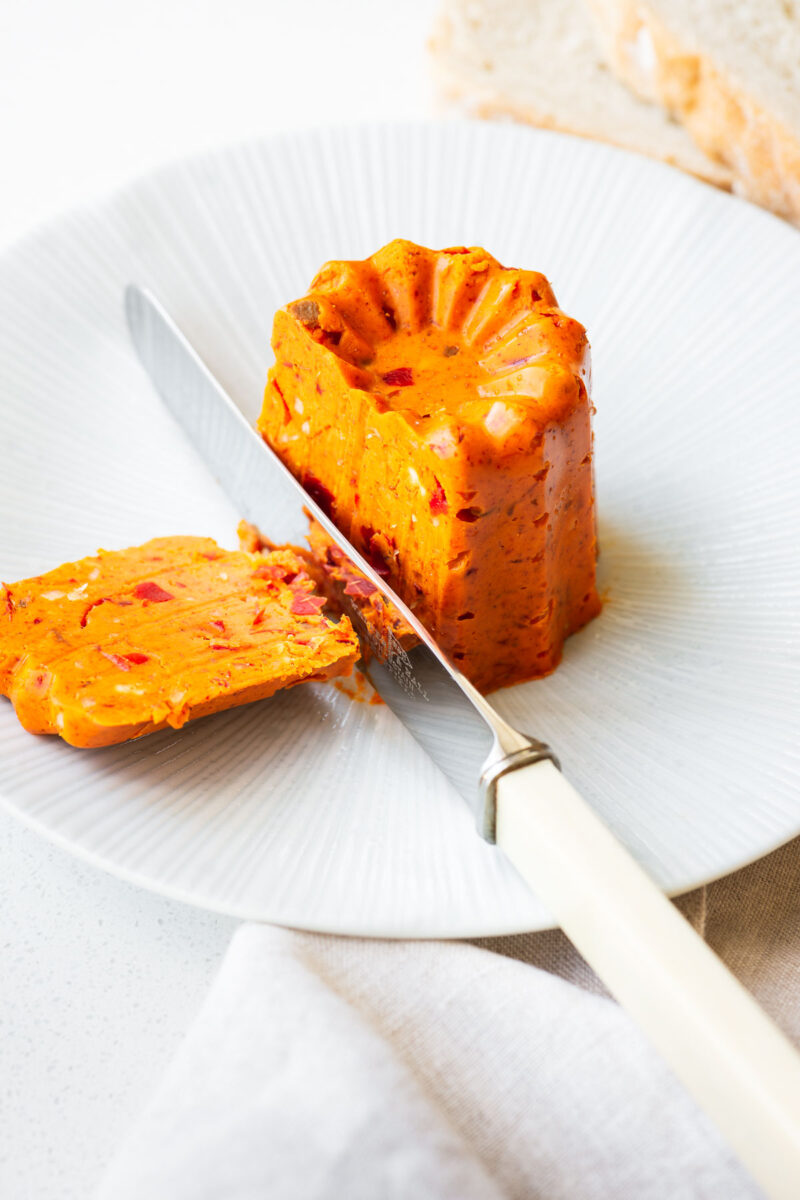
Frequently asked questions
Yes, if you don’t have harissa paste, you can create a quick harissa paste by hydrating harissa powder (or another spice blend) with water. Then add olive oil, lemon juice (or vinegar), tomato paste and kosher salt until you reach the desired consistency. See more harissa paste substitutes.
Harissa paste is a great marinade for meat, fish, and vegetables, it adds flavour to soups and stews and makes a condiment for sandwiches and wraps. Or mix it into dressings, sauces, and dips for an added kick of flavour.
Harissa paste is typically spicy, but the heat level varies depending on the type and amount of chillies used. You can control the spiciness in homemade harissa by adjusting the amount of chillies or by adding other ingredients like tomato paste or honey to balance the heat.

Equipment
Ingredients
- 6 dried guajillo chiles
- 3 dried ancho chiles
- 2 dried chile de arbol
- 4 garlic cloves , peeled
- 3 teaspoons cumin seeds
- 2 teaspoons coriander seeds
- 1 teaspoons caraway seeds
- 1 tablespoon tomato paste
- 1½ teaspoons Kashmiri chilli powder
- 2 tablespoons fresh lemon juice
- 3 tablespoons cider vinegar
- ½ cup olive oil , divided
- 1 teaspoon salt , more to taste
Instructions
- Place a frying pan or skillet over high heat. Once the pan is hot, add the dried chiles and garlic cloves. Toast until fragrantly smoky and charred – about 2 to 3 minutes. Pick out the garlic and set aside.
- Transfer the chiles to a heat-proof bowl and cover them with boiling water. Place a small plate on top of the chiles to fully submerge them. Soak for 30 minutes, then drain the softened chiles. Remove the stems and roughly chop them along with the toasted garlic.
- While the peppers rehydrate, add the cumin, coriander and caraway seeds to the same frying pan and toast over medium heat until fragrant – about 2 minutes. Add the toasted spices to a food processor and blitz for a minute to break them down.
- Add the rehydrated chiles, toasted garlic cloves, tomato paste, and chilli powder to the food processor bowl containing the spices. Pulse a few times until everything is roughly chopped and well combined. Scrape down the sides as needed.
- Add the lemon juice, cider vinegar, 4 tablespoons of olive oil and the salt to the food processor. Blitz until you have a coarse, thick paste.
- Transfer the harissa paste to a small bowl and stir through the remaining 4 tablespoons of olive oil.
- Refrigerate the harissa in a sterilised airtight container and use it within a week. Or, for longer storage, cover the surface of the harissa paste with a thin layer of olive oil. This way, it will last for up to four weeks.
Notes
- If you don’t have guajillo chile, ancho chile, or chile de arbol, you can use whichever dried chiles you have available. But, it will affect the flavour and heat of the harissa paste. See ingredients and substitutes for more alternatives.
- You can replace the Kashmiri chilli powder with ground cayenne pepper for a spicier harissa paste – start with ½ teaspoon and add more to taste. Or use smoked paprika instead for a smoky and mild harissa paste.
- Don’t fret if you don’t have all three spices in your pantry. Use the ones you have to make up for the ones you don’t. Use 2 tablespoons worth of spices in total. And, if you don’t have any whole spices, swap the seeds for ground cumin, ground coriander, and ground caraway (and skip the toasting step).
Homemade harissa
- See how to make rose harissa paste (or normal harissa paste) from roasted red bell peppers.
- Or make an easy harissa paste using rehydrated dried chiles.
- You can also make harissa paste from harissa powder (+ how to make harissa powder).
- Or try one of the best harissa substitutes for an instant harissa paste alternative.
- Make a fragrant dry harissa powder – a homemade spice blend from toasted whole chiles and spices – to reconstitute into harissa paste in a moment.
My most popular recipes with harissa paste
If you like this lemon tahini sauce, you might also like these tahini dressings and sauces



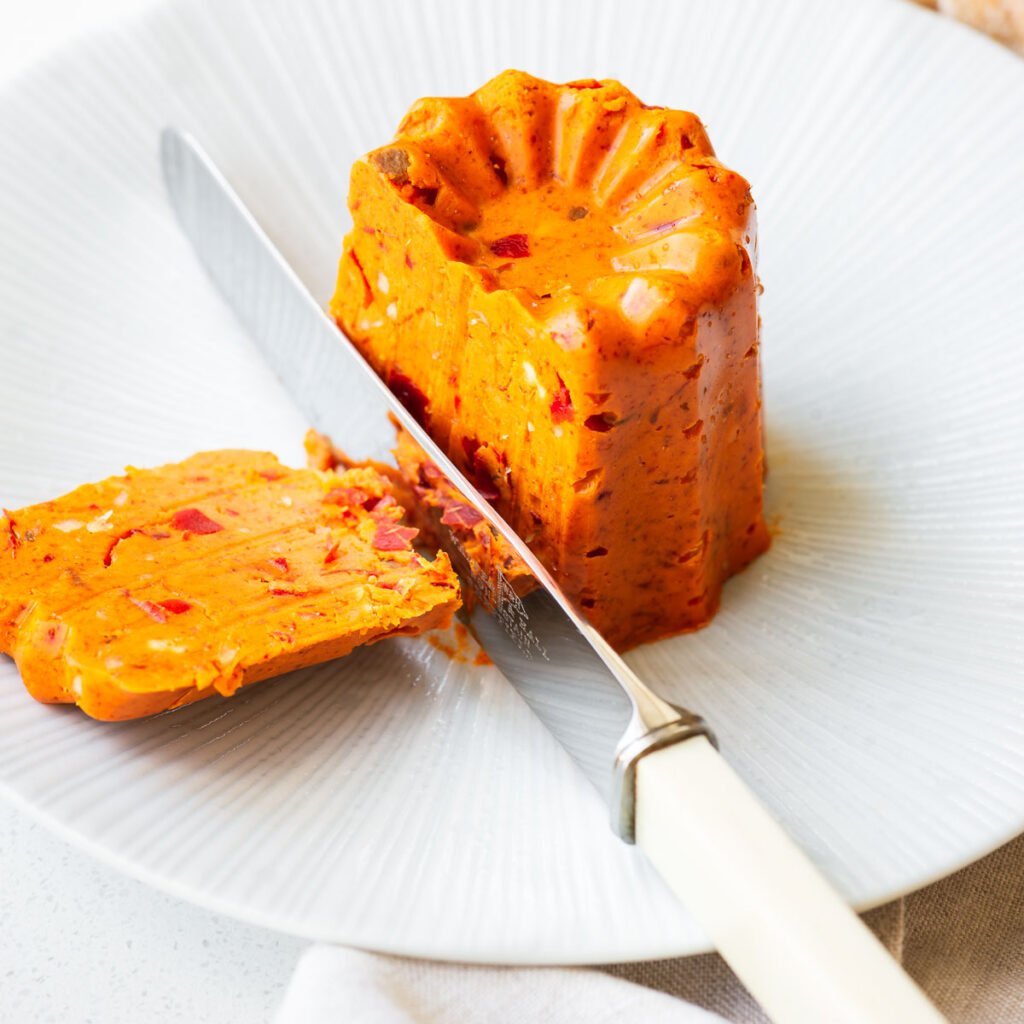

I never realized how easy it was to make your own Harissa sauce. This was great!
It’s really so easy and super delicious!
I made this harissa paste last night and it was so easy! I drizzled it over veggies and they were delish!
It really is so easy and versatile! I looove drizzling harissa paste over veggies, I’m happy to hear you loved it too!
Yes – are are right! I’ll never purchase harissa paste again. This is delish and so nice I can adjust the heat so the whole family can enjoy. Thanks for the easy to follow directions.
So true, Stephanie! Once you realise how easy it is to adjust the heat level in your homemade harissa paste, you won’t be able to stop making it from scratch!
The Easy Harissa Paste recipe is wonderful! It’s simple to make and adds a perfect spicy kick to any dish. Great for those who love bold flavors. Thank you!
It really is such a flavour kick for any dish! And, I’m thrilled to hear you loved the easy harissa paste recipe!